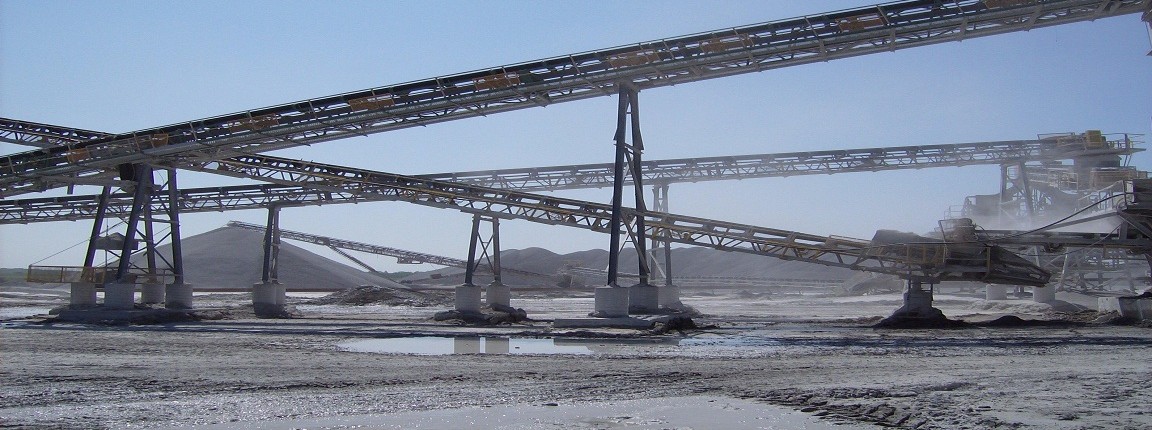Mining operations are considered among the most adverse of work environments, potentially hostile and unsafe. Workers may be exposed to a wide range of mineral dusts containing silica, heavy metals, nuisance particulates, volatile organic compounds (VOCs), diesel exhaust emissions during extraction, grinding, separation, and transport.
OSHTECH provides expert services for laboratory analysis and professional support to assist with sampling campaigns, worksite evaluations of conditions in the work environment, compliance verification, etc. Our AIHA-LAP, LLC accredited laboratory and consulting services are here to assist you. Please contact us if any of these services interest you.
Air contaminants typically associated the mining and mineral processing are listed below.
Silica
Source
Silica is a naturally occurring substance. Respirable silica is created through the mechanical process when rock containing silica is drilled, blasted, crushed or transport.
Characteristics
Respirable silica is very small (<10 micrometers) and breaks down into particles similar to glass shards; they are not visible to the naked eye.
Health Effects
Scarring of the lungs resulting in silicosis with long term exposure; other health complications as a result of exposure.
Precautions
Wetting down areas to prevent dust from becoming airborne; ventilation to remove or dilute dust; air sampling for silica.
Sampling and Analysis
Silica is analyzed by NIOSH method 7602. The sample media consists of a pre-weighed PVC filter in a 37mm cassette. Click here for analysis information.
Asbestos
Source
Naturally occurring substance can be contained in a variety of rock types; used in a variety of products e.g. insulation, shingles, ceiling tiles, wall plaster, brake pads, etc.
Characteristics
Long thin fibre (3:1 ratio) <10 micrometers;visible only with a microscope Health Effects
Reaches deep into the lungs and cannot be removed which may result in asbestosis; or a cancer known as mesothelioma
Precautions
Respirators and other appropriate PPE must be worn; containment and proper disposal; air sampling
Sampling and Analysis
Bulk asbestos is analyzed by EPA 600/R-93/116
Asbestos fiber counting samples are analyzed by NIOSH 7400. The sampling media consists of a MCE filter in a 25 mm cassette with extension cowl.
Nuisance Dust
Source
Created through the mechanical process when rock is drilled, blasted, conveyed or transported
Characteristics
Small minute solid particles with diameters less than 500 micrometers
Health Effects
Short-term effects such as difficulty breathing and red, watery eyes; varies depending on mineral contained in dust
Precautions
Wetting down areas to prevent dust from becoming airborne; ventilation through removal or dilution of dust; air sampling for total dust.
Sampling and Analysis
Samples for nuisance dust can be analyzed by one of three methods:
Respirable nuisance dust is analyzed by NIOSH method 0600. The sampling media consists of a pre-weighed PVC filter in a 37mm cassette, attached to a cyclone.
Total nuisance dust is analyzed by NIOSH method 0500. The sampling media consists of a pre-weighed PVC filter in a 37mm cassette.
Inhalable nuisance dust is analyzed by MDHS 14/4. The sampling media consists of a pre-weighed PVC filter in an IOM cassette.
Diesel Particulate Matter
Source
Emissions of diesel-powered equipment
Characteristics
Contains oxides of nitrogen, sulphur dioxide, benzene, formaldehyde, hydrocarbons, soot
Health Effects
Immediate irritation to the respiratory tract; classified by the International Agency for Research on Cancer (IARC) as a ‘probable cancer-causing’ substance with repeated exposure.
Precautions
Maintenance of equipment, diesel particulate filters; sampling of equipment, air sampling for Total Carbon; adherence to air flow requirements in underground environment
Sampling and Analysis
Samples for diesel particulate matter are analyzed by NIOSH method 5040. The sampling media consists of a treated quartz filter in a 37 mm cassette.
Carbon Monoxide
Source
Incomplete combustion; blasting operations; confined spaces
Characteristics
Colourless, tasteless and odourless gas
Health Effects
High concentrations can cause chemical asphyxiation and death
Precautions
Monitor air concentrations in the area; provide adequate ventilation; preventive maintenance on vehicles to reduce CO emissions; monitor CO from equipment
Sampling and Analysis
Radon
Characteristics
Colourless, odourless and radioactive gas
Health Effects
High incidence of lung cancer with exposure to repeated high concentrations
Precautions
Air sampling of various locations; ventilation; review geology reports for uranium content
Heavy Metals
Volatile Organic Compounds
Source
Found in the fumes of solvents, paints, adhesives, photocopiers, air fresheners, fabric softeners, and tobacco smoke.
Health Effects
Low levels: fatigue, headache, dizziness and general discomfort
High levels: respiratory irritation, tightness in chest, and nausea
Precautions
Clean up and maintain good housekeeping; ventilate areas; use proper PPE during handling source
Sampling and Analysis
There are a wide variety of methods to samples VOCs. Please consult the laboratory for further information.
Hydrocarbon Fuel Vapours
Oxides of Nitrogen
Consulting Services
OSHTECH provides a comprehensive range of expert services & laboratory analyses to help solve your occupational health, safety & environmental concerns. We specialize in air quality testing, testing of building construction materials for asbestos, analysis of asbestos in vermiculite insulation, asbestos fibres in air, mold spore evaluations, silica, VOCs, metals, noise and vibration testing, ergonomics, safety inspections, job hazard analysis and environmental engineering.

